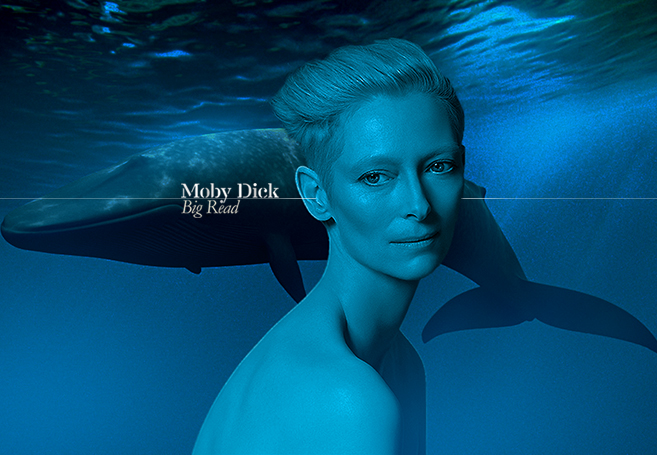By Philip Hoare ☛ Moby-Dick (1851) is the great American novel. But it is also the great unread American novel. Sprawling, magnificent, deliriously digressive, it stands over and above all other works of fiction, since it is barely a work of fiction itself. Rather, it is an explosive exposition of one man’s investigation into the world of the whale, and the way humans have related to it. Yet it is so much more than that. It is a representation of evil incarnate in an animal – and the utter perfidy of that notion. Of a nature transgressed and transgressive – and of one man’s demonic pursuit, a metaphorical crusade that even now is a shorthand for overweening ambition and delusion.
Out of all this, Herman Melville (1819-1891) created a work of art as unique as Mary Shelley’s Frankenstein or Emily Bronte’s Wuthering Heights, as mythic as Coleridge’s Rime of the Ancient Mariner – it is a true force of nature, set in a century that challenged every tenet of faith that had been held until then. Melville’s book – is it barely a novel – exceeds every expectation of a literary work. It bursts out of its covers with the enormity of its subject – as if the great White Whale itself were contained within.
Now, in the 21st Century, a century and a half since it was first conceived and launched onto a misbelieving world, Moby-Dick retains its power – precisely because we are still coming to terms with it, and what it said. Incredibly prophetic, it foresaw so many of the aspects of the modern world with which we deal with. The abuse of power and belief; of nature and the environment; of the human spirit. It deals with art and artifice and stark reality – in an almost existential manner. It is truly a book before its time – almost ancient myth, as much as futuristic prophesy.
In the spring of 2011, artist Angela Cockayne and writer Philip Hoare convened and curated a unique whale symposium and exhibition at Peninsula Arts, the dedicated contemporary art space at Plymouth University, under the title, Dominion. Inspired by their mutual obsession with Moby-Dick and with the overarching subject of the whale, they invited artists, writers, musicians, scientists and academics to respond to the theme. The result was an enthusiastic response which evidently could not be contained within the physical restrictions of a gallery space and a three-day symposium.
“I have written a wicked book”, said Melville when his novel was first published in 1851, “and I feel as spotless as the lamb.” Deeply subversive, in almost every way imaginable, Moby-Dick is a virtual, alternative bible – and as such, ripe for reinterpretation in this new world of new media. Out of Dominion was born its bastard child – or perhaps its immaculate conception – the Moby-Dick Big Read: an online version of Melville’s magisterial tome: each of its 135 chapters read out aloud, by a mixture of the celebrated and the unknown, to be broadcast online in a sequence of 135 downloads, publicly and freely accessible. Enter the magical whale at MobyDickBigRead.com to hear all 135 chapters read by such names as Stephen Fry, David Attenborough, and Benedict Cumberbatch. And listen to Tilda Swinton read chapter one above. For all FEELguide stories related to Tilda Swinton visit Tilda Swinton on FEELguide. (Source: Kottke; Photo collage made with images from: Denis Scott/ Denis Scott/Corbis, Moby-Dick Big Read, NARS Cosmetics)
.


